Frog Types | Habitats | Setup | Feeding | Health | Endangered frogs
What types of frogs make suitable pets?
There are many frog species that can make suitable pets. Any decision should include consideration of the size it will become, the amount of care it will require, and the type of food the specific frog species eats. Most frogs do not like to be handled, so if this pet is for a child consider that as well.
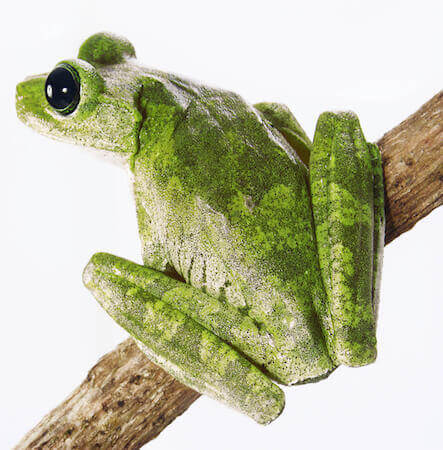
What Are the Best Pet Frogs for Beginners:
Pacman Frog
The Pacman Frog or the ornate horned frog is one of the largest frogs you can purchase for a pet. This species is native to subtropical regions in Brazil and Argentina. This nocturnal frog typically lives for seven to ten years. The Pacman frog is a very boring inactive frog that likes to burrow in most situations. It is easy to care for but may be difficult to find as it will only come out to soak in water and to eat. This specific breed does not like to be handled, so it may not be a great option for children.
Notes:
- Per Tank: One Pacman frog per tank (cannibalism is possible).
- Growth Rate: They will be fully grown at 1.5 years.
- How Big: Adult males: 2.5-4 inches (6-10cm). Adult Females: 4-7inches (10-18cm).
- Tank Size: 2-5 gal (8-19L) for babies. 10-20 gal. (38-76L) for adults.
- Temperatures: In captivity these frogs will enjoy air temperatures around 65 to 85F (19-29c).
- Lighting: Low light requirements with filtered light for day night cycle. No direct UV is needed if vitamin D is supplemented into the diet.
- Substrate: Always damp and deep enough to fully burrow into. Avoid loose substrate for small frogs to avoid impaction if it is accidentally consumed. Larger frogs can usually work through it. Towels can work well as substrate until the grow larger.
- Water: Add a water dish the frog can soak in but never be fully submerged in.
- Plants: By adding live plants it not only provides the needed hiding places for your frog, but also helps clean the tank naturally.
- Feeding: Juveniles should be fed once every two days. Coat the food in calcium two or three times a week. Adults can be fed once or twice a week and food should be coated in calcium once week. Appropriate size crickets and roaches should be a staple part of the diet.
- Not Dead: In dry and cool conditions they can enter a state of brumation (deep sleep) and not eat. They might also encase themselves in thick skin to protect them until conditions improve.
- Handling: Don’t handle them unless you have to. Mainly because they have teeth and can bite but also because they have sensitive skin.
Tomato Frog
The Tomato Frog originates from Madagascar and has an average lifespan of six to eight years. They range in color from yellow, to orange, to bright red, just like a tomato going through the ripening process. This species is easy to care for and does not need much area to climb. The tomato frog should only be handled when necessary, because it will secrete a white substance that will irritate the skin.
Notes:
- Per Tank: It’s okay to house similar in size tomato frogs in the same tank but not with two males or with other breeds.
- Obtaining One: One breed of tomato frog, Dyscophus antongilli is endangered and protected so to be safe, only obtain a tomato frog if it is bred in captivity. juveniles will be 1 to 1.5 inches long with a yellow-brown top and grayish-brown sides.
- Growth Rate: They will be adult size within a 1 year for males and a minimum of 2 years for females
- How Big: Males can grow up to 2.5-3 inches (7-8cm). Females can grow up to 4-5 inches (10-13cm).
- Tank Size: a 10 gallon (38L) tank at minimum for an adult size frog. Babies can live in smaller reptile kits.
- Temperatures: 65f and 80f (13.5-26.5c) from night to day (no higher than 80f).
- Lighting: Low light requirements but best to supplement the diet with vitamin D if no direct UV is added. Provide 12 to 14 hours or daytime in summer months and 8 to 10 hours of daytime in the winter months.
- Humidity: They prefer high humidity of around 80%. Improve humidity by misting every one to three days and by keeping the substrate moist (but not wet).
- Water: A water dish is a good low maintenance solution to providing moisture and humidity. The dish should not be too deep though.
- Habitat: At least 2 inches (5cm) of the substrate to allow burrowing. For hiding, plants live or fake and hollow logs. For added happiness, add a few branches or rocks for climbing.
- Feeding: Crickets and nightcrawlers are a staple to the diet. Treats can include small worms such as waxworms. Add calcium powder two or three times a week for juveniles and once per week for adult frogs.
- What’s This?: If your tomato frog starts turning brown it means it is not healthy due to improper conditions.
- Handling: Avoid holding this type of frog unless necessary since it doesn’t like to be held. It will puff up and then begin to secrete a milky substance that can cause skin irritation.
Fire Belly Toad
The Fire Belly Toad is a species that is native to China and Korea that is semi-aquatic. This species are diurnal, making it a more active option for children. The fire belly toad has a back that can range from lime to forest green and a stomach that is often bright orange or red. The life span of this species usually ranges from ten to fifteen years, and they tend to live in communities with other fire belly toads. They should only be handled when necessary because their skin secretions can be toxic.
Notes:
- Per Tank: 2-3 adult fire bellied toads per 10 gal tank (38L). Larger frogs may be aggressive towards smaller ones.
- How Big: These frogs will grow between 2-2.5 inches (5-6.5cm).
- How Old: They can live from 5-7 years or more.
- Habitat: A semi-aquatic habitat is needed. 25-50% of the environment should be dedicated to water.
- Water: Water areas can be achieved by providing a large water dish. The depth should be no deeper than what would allow for a frog to sit and relax in the water.
- Substrate: Avoid gravel that can be accidentally consumed while the frogs eat. Mosses and coconut husks work well to retain moisture and provide humidity. The depth should be deep enough to allow for full burrowing of the frogs.
- Temperatures: Fire belly frogs do better than many breeds in periods of colder temperatures. However, they prefer 70-75F (21-24c) in the day and 60-68F (15.5-20c) at night.
- Lighting: Low light requirements with no basking needed. No direct UVB light is needed. A day night night schedule is needed however.
- Humidity: These frogs love humidity. To increase humidity use substrates that retain moisture and avoid tank tops that are all screen.
- Feeding: As insectivorous eaters they enjoy crickets, mealworms and as a treat, small guppies occasionally. Occasionally add calcium powder onto the frogs food.
- Handling: This bred has a better temperament to be held than most frogs but still have sensitive skin and should only be handled occasionally and always with clean hands.
Whites Tree Frog
The Whites Tree Frog is a nocturnal species that were originally found throughout northern Australia. This species typically lives about fifteen years but they have been known to live up to twenty five years under the right conditions. These frogs tolerate being handled a bit more than most, but make sure to wash off any secretions as irritation may occur if it comes in contact with any cut.
Notes:
- Per Tank: One white tree frog (also known as a dumpy frog) can live in a 10 gallon tank (38 Liters). However these frogs are social and prefer to live in groups. Four frogs should have a minimum of 20 gallons (76 Liters).
- Tank Mates: Don’t mix breeds. Cannibalism is possible as well so only keep similar size frogs in the same tank.
- Growth Rate: Females can grow to 4-4.5 inches (10-11.5cm). Males are typically slightly smaller. Juveniles at pet stores are often around 2 inches (5cm).
- Temperatures: Daytime temperatures should be in the mid 80s 85F (29C) and nighttime temperatures should dip down to 70F (21C).
- Lighting: Low lighting needs are required with no need for UV light. A day night cycle should be used however. Twelve on and twelve off is a good cycle.
- Handling: This frog breed has a good temperament and will tolerate being handled rather well. Always wash your hands before and after handling them.
- Humidity: A high humidity environment of over 50% is needed. Moisture retaining substrate, water dishes and spray bottle misting will help keep humidity up. A non-screen lid will also help keep humidity up but the lid should also have plenty of ventilation holes.
- Water: A water dish should not be any deeper than the frogs in the tank. They should be able to easily sit and rest in the water dish without having its head submerged.
- Habitat: white dumpy tree frogs and climbers and will thrive in an environment that has lots of branches. For this same reason, a taller tank is recommended than the traditional aquarium shape.
- Feeding: Feed them as many crickets and earth worms as they can eat in 10-15 minutes. Waxworms and meal worms are good for occasional treats. Adults should be fed 2 to 3 times per week while juveniles should be feed daily or every other day.
- What’s This?: If the skin on the brow begins to cover their eyes, it is a sign you are overfeeding them.
African Dwarf Frog
The Dwarf Underwater Frog is a species that were originally found in West Africa that is entirely aquatic. Heavily vegetated areas with shallow water are where this species thrive. A typical lifespan is about five years, but some frogs of this species have been known to exceed twenty years.
Notes:
- Habitat: African dwarf frogs are fully aquatic and don’t need any land area. They do need to breathe air though.
- Size: They are a small frog breed and don’t grow much larger than a few inches, 2.5 inches (6.5cm).
- Tank Mates: These frogs are social and prefer to live in groups. They can also be housed with fish that are small enough that they can’t eat the frogs but also not too small that the frogs could eat them.
- Temperatures: They prefer warm but not too warm of water around 75F (24C).
- Feeding: African dwarf frogs like bloodworms and other freeze dried critters. They also like eating small living animals like tiny guppies. If you house them with fish, hand feeding them with long tweezers will ensure they actually get food.
- Hiding: These frogs will do well in an environment that offers plenty of places to hide. Providing tunnels, caves and plants (live or plastic) can offer them great places to hide.
- What’s This?: Often the African clawed frog gets mistaken for this dwarf breed. African clawed frogs will grow large so be aware of which frog you are actually getting.
African Common Toad
The African common toad also goes by the names: African toad, African bouncing toad, square-marked toad Egyptian toad, and Reuss’s toad.
Notes:
- Size: Males tend to be the smaller of the sexes at, 6-9 cm (2.3-3.5 inches), while Females range from 7-13cm (2.75-5 inches).
- Tank Mates: They like interacting with other African toads. A pair could live in a 15-20 gallon tank (56-75 liters).
- Habitat: These frogs prefer a moist Savannah like habitat and tropical/subtropical forests or grassland setups. The substrate can consist of coco husks, sandy top soil, and sphagnum moss
- Temperatures: 70-79*F (21-26*C) is the ideal temperature to keep the tank at with a few degrees temperature drop at night.
- Lighting: Lights are not needed but a fluorescent UVB tube is ideal if you have live plants. Any lights should be on a day/night cycle, such as, 12 hours on and 12 hours off.
- Humidity: Keep the humidity at 60-80%. You can use a spray bottle to mist the plants and substrate, place a water dish inside the tank or a purchase a special humidifier for this.
- Water: Add a shallow water dish to allow your frogs to soak. It only needs to be around an inch deep but clean it daily.
- Feeding: African toads are carnivorous and will do well with gut-loaded insects such as crickets, mealworms, flour beetles, grasshoppers, worms, or caterpillars. You can provide 3 or 4 insects per toad per feeding, every other day. Dust the food with a calcium supplement once a week.
- Hiding: Like most frogs, the African toad likes places to hide. a clay pot turned on its side, a hollow log or some grasses or plants
- Handling: This frog has a mild toxin on its skin so gloves should be worn to avoid itching or rashes.
- How Old: They can live about 10 years.
Other Frog Breeds
What type of habitats do frogs need to survive?
Different frogs required different habitats. When looking into where your frog will live, it is important to consider their size and if they are aquatic, semi-aquatic, or land dwelling frogs. Also consider the frog’s jumping ability and climbing needs when considering a tank size and shape.
Types of Frog Habitats:
- Terrestrial: A Terrestrial Tank is the simplest set up for a frog habitat. It is a perfect environment for a species that come from an area that has a dryer climate.
- Aquatic: An Aquatic Tank is just like a fish tank. It is filled with water, and only aquatic frogs will do well in this environment.
- Multiple Zone: A Half and Half Tank is the most common type of habitat for frogs. Half of the aquarium is filled with water and the other half remains dry. Most frogs will thrive in this type of environment as it offers everything a frog living in a pond could ask for.
- Arboreal: An Arboreal Tank is a taller tank that is typically used when creating an environment for tree frogs. This tank is designed to give the frog climbing space that is part of their natural habitat.
- Pond: A Pond is also an option if space permits, but make sure to only use this method if the frogs are native to the area. Using a pond environment for other frog species can endanger the local frogs and insects.
Setting up a frog habitat
Once it has been decided what type of frog habitat is required for the specific species, it is time to start building its habitat. Start with a tank that will accommodate the size of the frog when it is full grown, and then start considering other essentials for the frog’s habitat.
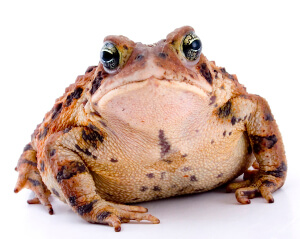
Substrate Material covers the bottom of the tank. Gravel stones are a good substance for most frog species that are easy to come by. Sand, soil or cedar and pine shavings are also great options for creating a foundation in the aquarium. To create a more natural look, a layer of moss can be placed onto the gravel layer. Make sure to keep the moss damp in the aquarium, but be aware this aspect of the habitat will need to be checked for mold. Decorative Materials can be used to make the aquarium more attractive and enjoyable for the frog. A decorative rainforest backdrop or objects for climbing can really make the frog feel at home. Round rocks and limbs are a perfect option for a frog environment. Adding a hollow log will make a superb hiding location for the frog. Lighting is a consideration for any frog habitat. Frogs do not need special lighting as they can gain enough vitamin D thought the food they eat, but they do need access to a light source for twelve hours a day. If natural light is not an option for this length of time, fluorescent lighting will need to be considered for the aquarium itself.Heating is another aspect to consider that will vary with each species of frog. If the room cannot remain at the temperature the frog required, a heating lamp is a great option. Another option is heating pads that can be wrapped around the entire tank. An aquatic tank may require a fully submersible water heater so the frog can live in a comfortable environment. Water is needed for any frog species for drinking and bathing. Make sure that any habitat has the proper amount that is needed by the specific species of frog that will live there. Since the frog will spend a lot of time in the water to absorb it through its skin, it will need to be cleaned on a daily basis.
What do different species of frogs eat?
Frogs are not vegetarians; they prefer a live meal that they can kill themselves. Depending on the species and the size of the frog meal choices may vary. Trial and error may be required to determine the appropriate amount to feed each specific frog. Crickets are one of the insects most frog species enjoy. Start with three a day and see if the frog eats them all. Crickets can also be dusted with calcium to assure the frog has strong bones. Feeding the crickets nutritious things like spinach, carrots, and apples will also provide the same nutrition to the frog. Worms are another food option for most frog species. Try feeding earthworms, mealworms, wax worms, and grasshoppers to the frog to get a better idea of what it enjoys. Some aquatic frogs will also enjoy bloodworms and brine shrimp on occasion. Mice and goldfish can be consumed by larger frog species on occasion. These meals are high in fat, and should not be a regular diet of any frog species.
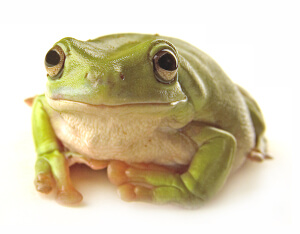
Keeping a pet frog healthy
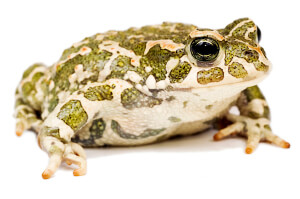
Frogs can become ill just like any other pets. When first acquiring a new pet frog it is best to quarantine it for a two week period to assure it will not pass on any illness to the frogs already residing in the tank. Frogs cannot get vaccinations at a veterinarian’s office, but it can be tested for different types of parasites. Calcium Deficiencies can be a common occurrence in frogs. Make sure to sprinkle a powdered calcium supplement on the frog’s food, and also make sure the frog is getting a variety of food, not just crickets.Red Leg is an illness that affects frogs in captivity and can potentially be fatal. The frog’s underside and legs will begin reddening, and the frog will become more lethargic. If red leg is suspected, scrub the entire habitat to remove the parasite, and give the frog a sulfamethiazine bath daily for a period of two weeks.Fungal Infections can occur in any frog species and will require a trip to a veterinarian. Antibiotics are the typical treatment for fungal infections and illnesses such as dropsy. Frogs don’t require an extensive amount of work. They don’t like to be handled so there is no need for affection like a cat or a dog requires. As long as the frog is fed, given water, and clean home with something to climb on it will be happy.
Frogs That Are Not Suitable as Pets
In nature, often if an animal is bright in color, it usually means it is poisonous. These colors are a way for a poison dart frog to tell predators that, “hey, I’m poisonous, don’t you try anything or you will regret it”. If you ever see any of these, don’t pick them up and stay clear. Furthermore, due to deforestation and the illegal pet trade, many of these frogs are endangered. you can learn more about poison dart frogs at the Rainforest Alliance website or on the San Diego Zoo website.
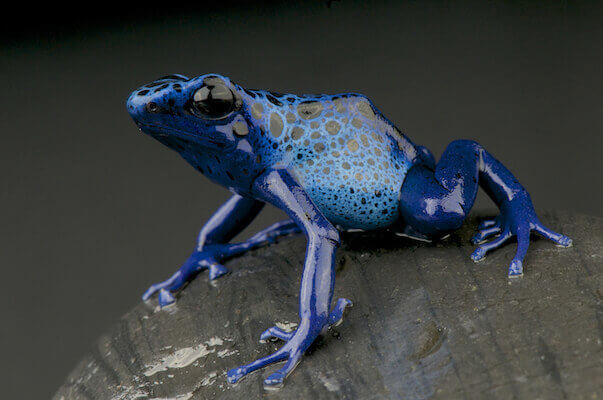
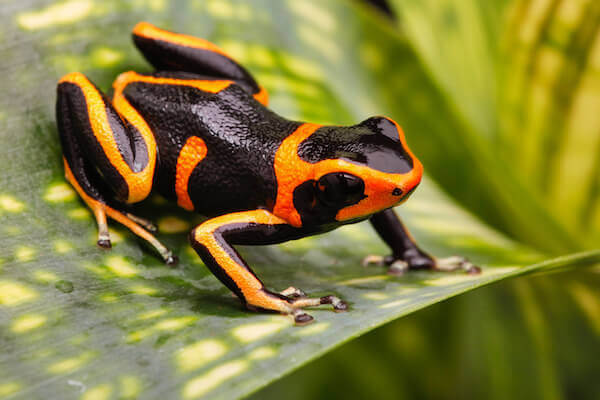
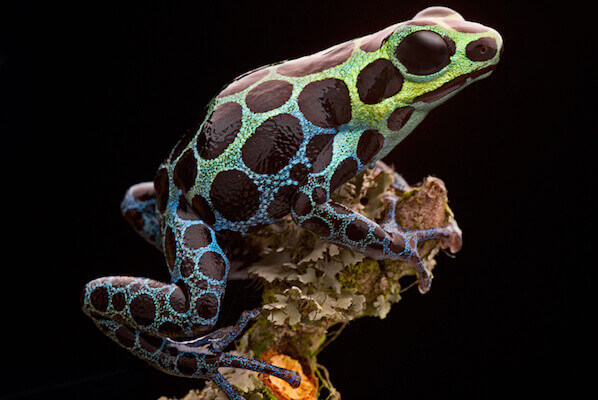
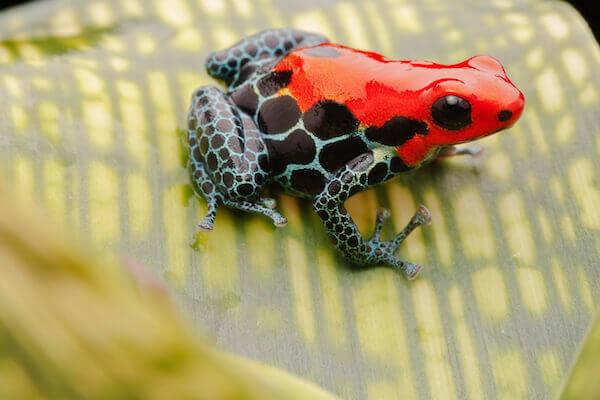
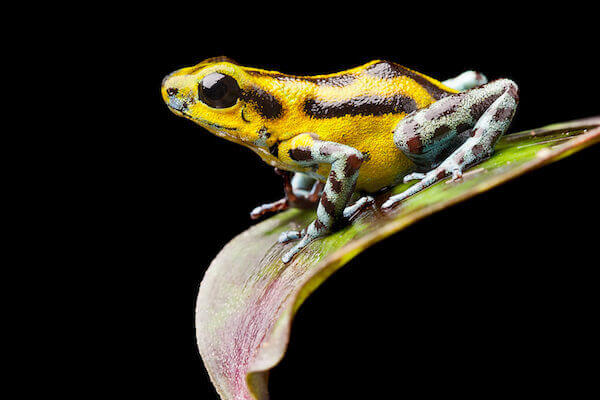
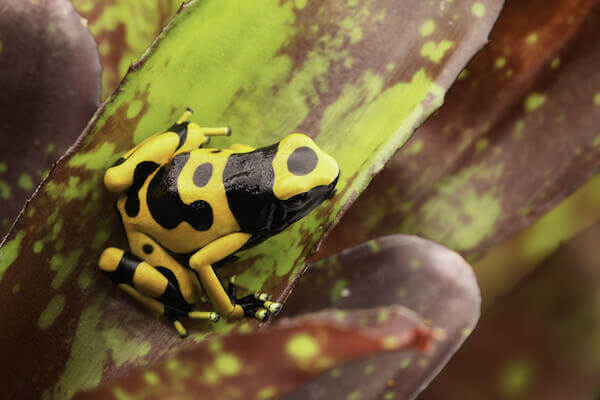
Resources
Exploratorium.EduKids.NationalGeographic.ComThe Academy of National Sciences
Reviewed By: Tim Winter


Tim Winter has a strong affection for pets and wildlife. His years of experience caring for various types of pets has led him to share his knowledge with others on the best practices in pet care. Tim holds a Bachelor of Science from the University of Oregon School of Journalism and Communications.

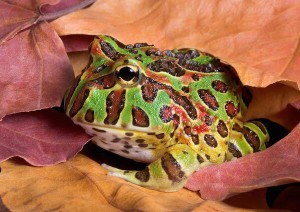
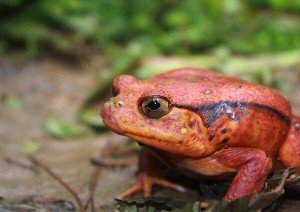
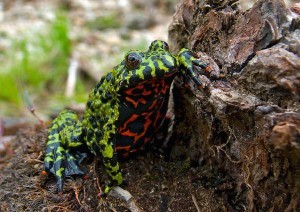
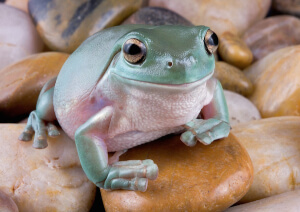
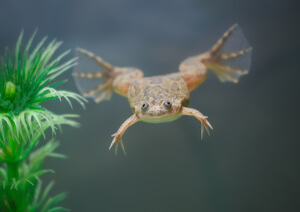
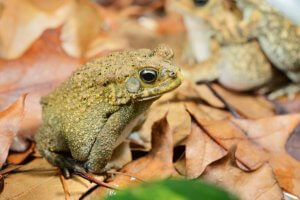
My husband is planning to buy our son a pet frog because the boy has been asking him for it for months. I like that you said we should prepare a proper habitat for the frog before we bring it home. It’s great that you mentioned that a multiple zone tank is a great habitat for it because it has a wet and dry area. I’ll make my husband build one using an old fish tank in the garage before he looks for reptiles for sale downtown. Thanks!
My husband is planning to buy our son a pet frog because the boy has been asking him for it for months. I like that you said we should prepare a proper habitat for the frog before we bring it home. It’s great that you mentioned that a multiple zone tank is a great habitat for it because it has a wet and dry area. I’ll make my husband build one using an old fish tank in the garage before he looks for reptiles for sale downtown. Thanks!
I brought in a plant from the deck and every once in a while I hear a sort of churping noise, thinking it’s a tree frog, can’t seem to find it in the plant, not sure what I can do as its cold now outside will he hibernate? With the warmer temp in the house?
Frogs do indeed hibernate when it is cold outside but it might not now that it is inside where it is warm. It’s not recommended that you take it back outside if the temperature difference is too extreme. You could try hibernating it in a shed or garage – or some solution that allows the air temperature to drop slowly. We are not experts in frog hibernation but we do have an article on hibernating a turtle that might help.